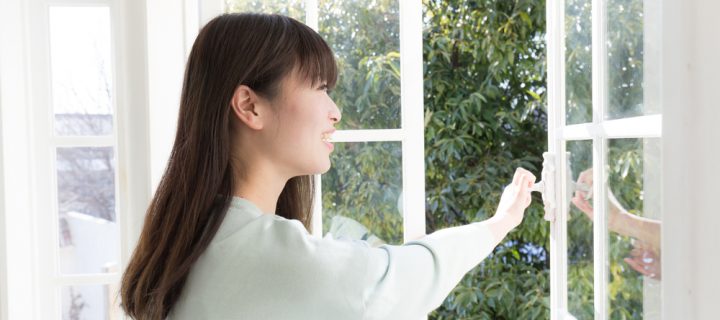Wear gloves, wash with hot water, and keep the sick person separate.
When it comes to the coronavirus and stopping it in its tracks once it has entered your home, there are certain extra steps you can follow that are recommended by health professionals, in order to help you stay safe.
The Centers for Disease Control and Prevention (CDC) has guidelines on its website related to how you can clean and disinfect your home if you suspect someone has COVID-19 or if there is a confirmed case of the virus in your home. Here are some of some of the highlights.
1) Isolate the Sick Person
Keeping the sick person separate from the others in your home can go a long way towards stopping the spread of the virus. Of course, other measures are necessary, but if the sick person is mingling with everyone else, your job is that much harder.
The CDC recommends that you designate a separate bedroom and bathroom for the person who is fighting the coronavirus. The person should stay in their specific room as much as possible, in order to reduce contact with others.
Related: How Does the Coronavirus Compare to H1N1?
You may feel inclined to clean their room often, but the opposite is recommended. If the room is occupied by a child, or someone else who cannot handle cleaning supplies, obviously you must clean it, if needed.
The CDC recommends that you not enter to clean the room, however, unless there is a high need, such as a spill or soiled items. Leave cleaning the infected room thoroughly until after the person has fought off the virus.
If the sick person can clean things themselves, provide them with personal cleaning supplies such as paper towels, disposable sponges and EPA-registered disinfectants.
2) Wear Gloves
Be sure to wear disposable gloves when you disinfect common surfaces. Throw them out after each cleaning. If you need to use reusable gloves, dedicate them to cleaning surfaces for COVID-19. Do not use them for anything else. Wash your hands with soap immediately after removing your gloves.
3) Clean and Then Disinfect
Visibly dirty surfaces need to be cleaned with soap and water or a detergent first, before applying disinfectant, the CDC states. If you have a greasy countertop, the disinfectant may not work as well. Clean first, and then apply an EPA-registered disinfectant, according to the manufacturer’s instructions.
Related: This is Why UV Light Cannot Treat COVID-19 on Humans
4) Disinfect Commonly Touched Surfaces
It is important to disinfect all commonly touched surfaces regularly in your home, such as light switches, remote controls, cell phones, tablets, touch screens, and keyboards. Again, use an EPA-registered disinfectant, and follow the manufacturer’s instructions.
5) Disinfect a Commonly Shared Bathroom After Each Use
Your home may have a bathroom you can designate to the sick person, or it may not. If you have just one bathroom and you must share it with the sick person, the bathroom should be cleaned and disinfected after each time they use it.
6) Wash Clothing in Hottest Water
You also need to take precautions when washing the sick person’s clothing. Wear gloves to handle their laundry, and set the washer to the hottest possible setting. Take care not to shake the laundry out, as this can spread the virus. Throw your gloves out after you are done.
When it comes to the clothes hamper, disinfect it as you would commonly touched surfaces. You may also consider using disposable bag liners.
7) Consider Wipeable Covers for Electronics
If you are concerned about liquids pooling in your electronics when you disinfect them, placing things like keyboards and remote controls in wipeable plastic covers.
Related: Other Times in History People Had to Live Under Quarantine
8) Handle the Dishes With Gloves, and Use the Dishwasher
Even your dishes will need special attention. Some people may resort to using disposable plates, cups and cutlery when dealing with a sick person, but it creates a lot of trash and can cost extra money.
Handle the sick person’s dishes with gloves, and use the dishwasher to wash all reusable dishes, on the highest settings
9) Dedicate a Trash Bin for the Sick Person
In order to limit the spread of the virus, if you can, choose a trash can that only the sick person uses.
Before leaving the infected trash at the curb, you may wish to call your local public health department. They may have special instructions regarding COVID-19 trash pickup.
10) Ventilate the Sick Person’s Room
Experts say it is unknown how long the air inside a room occupied by a person battling COVID-19 remains infectious. If you can ventilate their room, this could be good. You may help shorten the time it takes the infected respiratory droplets to be removed from the air, and lessen their circulation in your home.
For more tips on cleaning from the CDC, click here.











